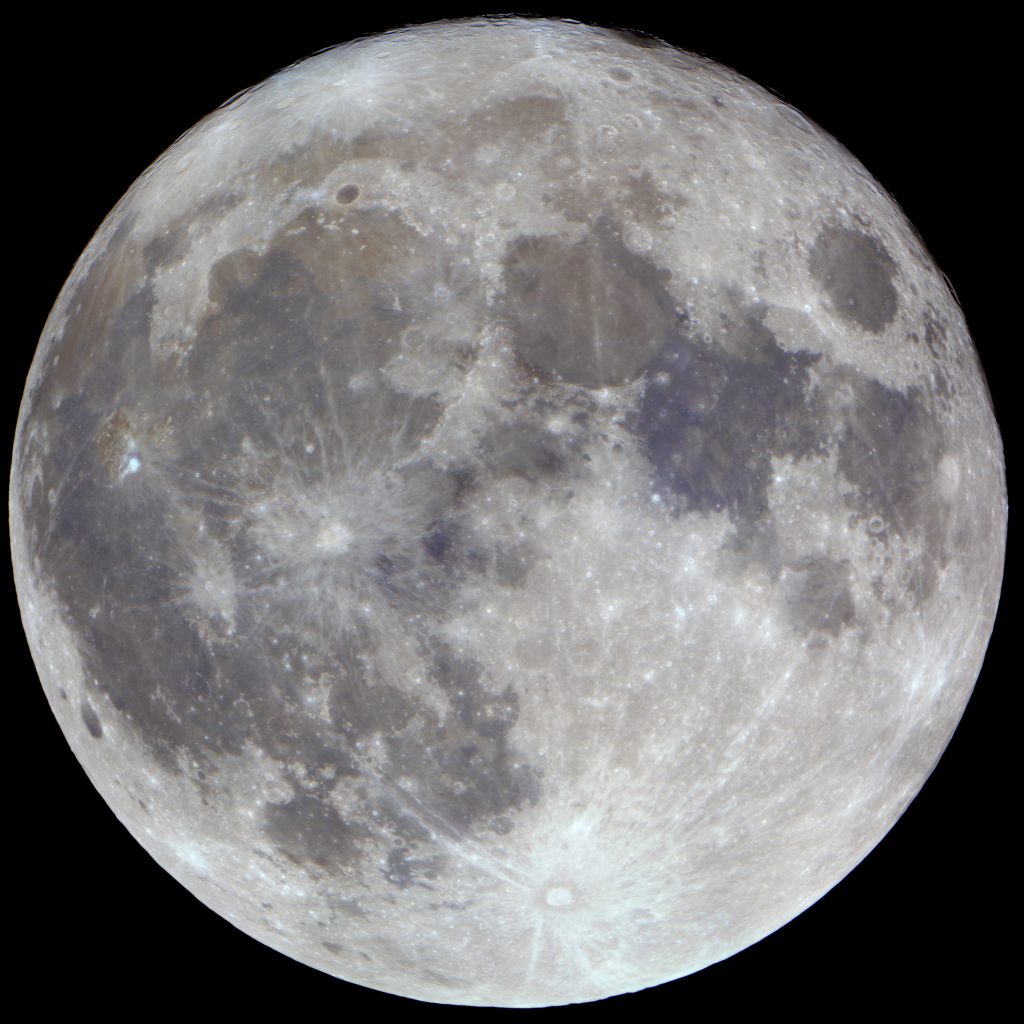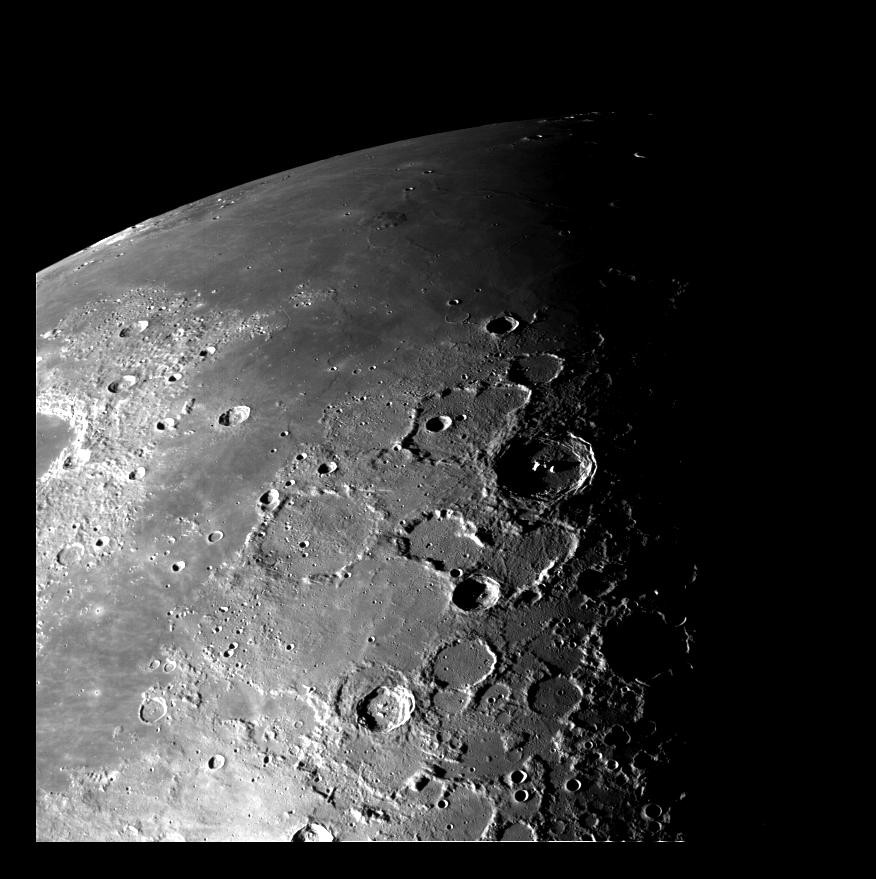Summary | Key concept | Science Story | Background Science | Activity | Curriculum links | Linked Activities
- Suggested Age Range: 4 – 5 years; 5 – 6 years; 7 – 8 years
- UK Primary Curriculum: EYFS (Reception); Key Stage One; Key Stage Two (lower)
- Suggested UK Year Group: EYFS (Reception): Year 1; Year 3
- UK EYFS Curriculum Link: Understanding the World
- UK Primary Curriculum Link: Everyday Materials (Y1); Light (Y3); Rocks (Y3)
- Science Subject: The Moon; Sun, Moon and Earth; Surface of the Moon; Moon Phases
- Science Question: What are the dark patches on the Moon? Why does the Moon have dark patches? Why does the Moon have craters? What is the Moon made of? Why does the Moon change shape?
- Activity type: individual
- Suggested linked stories: A Rope to the Moon (EYFS & KS1); Travelling to the Moon(EYFS & KS1); The Woman in the Moon (KS2); The Man in the Moon (KS2)
Brief summary: The Moon is a spherical rocky body, like the Earth but significantly smaller. Throughout the month the Moon appears to change shape, from the invisible new Moon, through the crescent phase, to a half Moon, and then circular full Moon, before disappearing again back to New Moon. The Moon emits no light of its own, this effect is purely down to how we see the change in illumination from the Sun as the Moon slowly orbits the Earth.
Key concept: The Moon does not generate light, it only reflects the light of the Sun.
Key words: Moon, Sun, light, shadow, Full Moon, Half Moon, New Moon, Crescent Moon
Visuals:
Animation of the Moon changing shape from New Moon to Full Moon and back again, covering the 29 days of the lunar cycle: https://wesharethesamemoon.org/resources/activities/extras/LunarPhases.mov
See also images of various lunar features from the Lunar Planetary Institute.
The Science Story:
What shape does the Sun look in the sky?
It looks like a circle. The Sun is really a giant ball, a long way from the Earth.
What shape is the Moon? Is it also a circle?
Sometimes the Moon is a circle, but sometimes it is other shapes.
What shapes do we see when we see the Moon?
Sometimes we see a half-Moon, sometimes we see a banana-shaped Moon (this is also called a crescent Moon), and sometimes we see the Moon as more than a half-Moon but not quite a circle (this is called a gibbous Moon).
The Moon is not like the Sun. The Sun is a star and shines very brightly.
Is the Moon a star?
No, the Moon is made of rocks, like the Earth.
Do rocks shine?
No, rocks do not shine. We see rocks (and animals, and people, etc) on the Earth because they reflect sunlight, just like I can see all of you because you are reflecting the light in this room. We see the Moon because the Sun shines on it, and we see the light reflecting back to us, as if the Moon were a dusty mirror.
The Moon is a ball, like the Earth, but quite a lot smaller. The Sun shines on the Earth and gives us day and night. The Sun only shines on half of the Earth, so one half of the Earth has daytime, and the other half has night. The same happens on the Moon. When one side of the Moon has daytime, the other side of the Moon doesn’t see the Sun and it is night-time.
As the Moon goes around the Earth, sometimes we see the daytime side of the Moon, the Moon looks very bright and we call this a Full Moon. Sometimes we can only see a bit of the Moon lit up by the Sun, and this is a crescent Moon.
Sometimes we only see the side of the Moon where it is night-time, so the Moon looks very dark to us; this is called a New Moon.
Visual demonstration: show this movie to the class. This animation shows the Moon changing phase from New Moon to Full Moon and back to New Moon. (In reality this takes about 29 days, so the movie is much faster than real time.)
Optional demonstration: At this point you can demonstrate the phases with a white ball and a lamp or torch. Illuminate the ball and ask the students what shape the illuminated part looks from where they are sitting. This works best if you have the students in a semi-circle so that there are different answers depending on where they are sitting.


The Science: The Moon is our nearest neighbour in the Universe. It is a small rocky body, with a solid surface like the Earth. It is too small to hold an atmosphere though (it doesn’t have enough gravitational pull), and one consequence of this is that the Moon’s surface is much colder than that of the Earth. Since it is so cold on the Moon there is no liquid water and no life.
Unlike the Sun and the stars, the Moon emits no light of its own, we only see it because it reflects the light of the Sun. (This is also how we see the other planets – none of them emit their own light either, we only see reflected sunlight from their surfaces.)
From our vantage point here in the Earth, the Moon appears to change shape over a month (the word “month” is in fact derived from the word “moon”). Like the Earth experiencing day and night, only half of the Moon is ever illuminated by the Sun (“lunar day”), the other side is experiencing “lunar night”. The Earth spins once on its axis every 24 hours, so one Earth-day is 24 hours long.
The Moon also spins on its axis, but it spins much more slowly than the Earth, in fact it takes 29.5 days to spin once on its axis. This means that lunar-daytime lasts for about two weeks, and lunar-night-time on the Moon also lasts about two weeks. One full lunar day lasts almost four Earth weeks!
The Moon is also in orbit around the Earth, in the same way that the Earth is in orbit around the Sun. The big difference is that it takes one year (365.25 days) for the Earth to complete one orbit of the Sun, while it takes the Moon 29.5 days to complete one orbit of the Earth. Because the Moon takes the same time to complete one orbit of the Earth as it takes for the Moon to spin once on its own axis, we only ever see one side of the Moon.
Sometimes when the Moon is close to being a New Moon and there is only a thin crescent visible, if you look carefully you will notice that the rest of the Moon is faintly visible. This effect is called “Earthshine” and happens because the Moon is also reflecting light from the Earth. If you imagine being on the surface of the Moon when it is close to New Moon and looking down at the Earth – you would see an almost completely-illuminated Earth. Earthshine is the result of light from the Sun reflecting off the Earth, and then being reflected back to us by the Moon’s dark half.
The activity: This activity lets the students create their own model of the Moon. They can make their Moons look realistic (looking like the real Moon) or they can be creative and design their own Moon based on something from one of the linked stories, or something completely different. Polystyrene balls can be sourced from many craft shops. The completed Moon globes could be hung from the classroom ceiling to make a display.
Props required:
- White foam or polystyrene balls (1 per student)
- Wooden lollypop sticks or pencils (1 per student)
- Craft knife or similar
- Pens or other art materials (paint, stickers, glitter, etc.) for decorating the models
Safety note: Care needs to be taken when pushing sticks or pencils into the Moon models, this is best done by an adult in advance. If using lollypop sticks, use the craft knife to make a cut in the polystyrene ball large enough for the lollypop stick, then carefully push the stick a few centimetres into the ball.
- Think about the Moon. What colour is it? Can you see any patterns?
- Look carefully at a picture of the Moon. Can you see any animals in the patterns? Can you see the Man in the Moon?
- Now you can collect a Moon globe from your teacher.
- Have a look at your Moon globe. What shape is it?
- Decide how you want to decorate your Moon globe. You can make it look like the real Moon, or you could draw the Man in the Moon, or anything else you like!
Extension: Instead of ready-made balls, students could create their own Moon models using balloons and papier-mâché. An alternative is to create examples of the different phases using paper plates decorated to look like the moon with the dark part coloured with pen or covered in dark paper/fabric.
In either case, the Moon models can be decorated to depict the surface of the Moon. This could be done realistically using a map of the prominent lunar features, or it could be more artistic with the students illustrating their favourite character from a Moon tale. Grey pens or paints could be used, or for a more tactile version to show craters and mountains you could use fabric and other art materials.
Common misconceptions:
- It is often thought that we never see the dark side of the Moon – the “dark side” of the Moon is whichever half is currently not illuminated by the Sun. As the activity demonstrates, this changes gradually throughout the month, so there is no fixed “dark side of the Moon”. We never see the far sideof the Moon, because the Moon rotates once in the same time it takes to complete one orbit around the Earth.
Curriculum links:
- Science KS1 everyday materials – what is the Moon made of?
- Mathematics KS2 (lower) geometry – properties of shapes: recognise 3D shapes in a variety of orientations and describe them.
- Science KS2 (lower) rocks – compare rocks based on their appearance.
- Science KS2 (lower) light – dark is the absence of light; light is reflected from surfaces; shadows are formed when light is blocked.
- Art and design KS1 & KS2 – improve mastery of techniques including drawing and painting with a range of materials.
Use with other years:
- Use with EYFS: this can be used as a follow-up activity for a more in-depth exploration of understanding the world around us (e.g. what is the Moon? what do we see on the Moon?)
- KS2 light: for a more in-depth activity for older students, with an experiment to explore the phases of the Moon, see the activity “Moon Phases”.
Linked activities:
Moon Phases, use your Moon Globe to explore the phases of the Moon – We Share the Same Moon: https://wesharethesamemoon.org/?p=586
Similar activity with illustrations from NASA, very useful for demonstrating the same principle if you do not have a dark classroom: https://www.jpl.nasa.gov/edu/teach/activity/moon-phases/
Why the Moon always keeps the same face towards us – astroEDU: https://astroedu.iau.org/en/activities/1504/lunar-day/
Moon phases using Oreos, ideal for EYFS – NASA: https://spaceplace.nasa.gov/oreo-moon/en/
No-bake Moon cookies, an edible Moon activity – NASA: https://spaceplace.nasa.gov/moon-cookies/en/
Build your own Sun-Earth-Moon orrery if you have the time and a 3D printer: https://www.instructables.com/id/Make-a-Tellurion-sun-earth-moon-Orrery-for-Your-Ki/
Copyright: Megan Argo 2019





